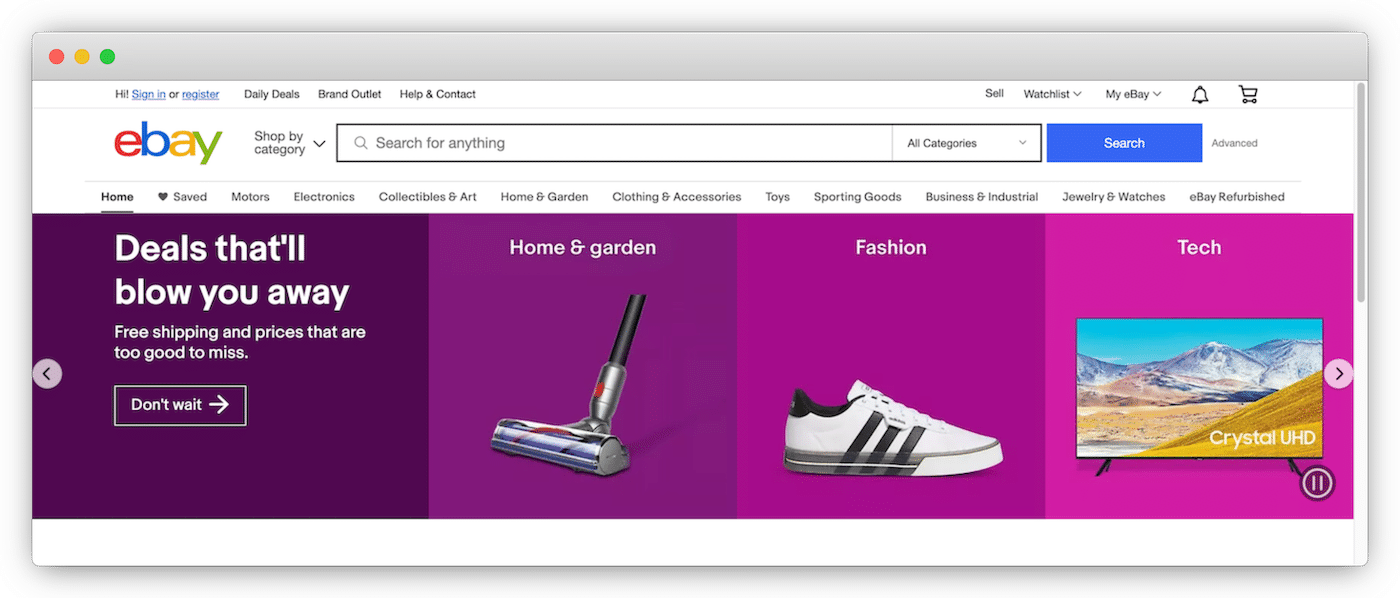Which Types of E-Commerce Business Models Are Most Popular?

U.S. e-commerce sales are set to hit $1.06 trillion at the end of 2022.
Brands and retailers should consider the benefits, advantages, and disadvantages of each type of e-commerce, as well as evaluate their business needs to ensure the most return on investment.
The most common e-commerce models today include B2B, B2C, D2C, and marketplace, all of which have their own distinct feature set.
fabric headless commerce to provide the omnichannel capabilities and flexibility needed to meet today’s growing customer demands.
Today’s e-commerce market is very different compared to how it looked just a few years ago. E-commerce sales were sitting at 19% as of February 2020. Just a year later, the numbers have skyrocketed to 35%, and it isn’t slowing down anytime soon. In fact, the U.S. e-commerce landscape is expected to reach an estimated $1.065 trillion in 2022.
While global lockdowns forced brick-and-mortar stores to close, online retailers were busier than ever, adopting various e-commerce models to meet consumer demands. More brands are even running digital commerce for multiple business models.
Some B2B businesses have embraced D2C for the first time, while other D2C brands are “testing the waters” with B2B2C to help them power all routes to market. In 2017, Nike relied on 30,000 retailers to get its product to end customers, but by 2019, it only needed 40 strategic retail partners worldwide by adopting D2C retail. Yet, its digital sales soared 82%.
Whether you are a high-growth brand or an established traditional retailer, knowing the types of e-commerce that suit your business is one of the key steps that can help grow your business. In this article, we’ll take a look at the types of e-commerce business models, including relevant examples to fuel your inspiration.
[toc-embed headline=”Types of E-Commerce”]
Types of E-Commerce
E-commerce growth in recent years has increased, and it’s easy to get caught up about the latest trends. Still, unless retailers are familiar with the uniqueness of each e-commerce business model, they run the risk of wasted resources and budgets. Let’s examine the benefits and downsides of each model.
| Type of e-commerce | Pros | Cons |
| B2B | This reduces stress by providing a platform for transactions between vendors and buyers. | There is access to a smaller segment of buyers compared to other models. |
| B2C | It is easy to start and requires little investment in marketing. | Because B2C deals with small orders, shipping and production takes the bulk of the income. |
| D2C | This ensures a concrete relationship between brands and customers. | This requires an enormous financial commitment to make the brand visible across channels. |
| Marketplace | Sellers have access to an already established community of buyers. | There is no personal relationship between buyers and sellers. |
[toc-embed headline=”B2B E-Commerce”]
B2B E-Commerce
B2B e-commerce is also called B2B digital commerce. It’s a form of commerce where business transactions occur inside an online procurement platform or any other online space. 71% of B2B buyers prefer buying from B2B e-commerce platforms compared to the strenuous traditional process.
This e-commerce business model simplifies procurement for wholesalers and retailers by providing a secure profile for replenishing orders and requesting quotes. Salespeople can shift their focus from selling to product educators and enablers of new solutions and build concrete relationships with buyers.
According to Market Watch, the global B2B e-commerce market held a market value of $8,523.3 billion in 2021 and is projected to reach $18,771.4 billion by 2027, making it a profitable market for brands. In addition, B2B companies invest in building e-commerce stores for their business because it lets them widen their revenue stream.
With B2B e-commerce, vendors can access an entire class of buyers ready to pay for their solutions. They also can provide custom pricing and tailored product offerings based on customer groups, shopping behavior, or client profile, leading to more sales and better return on investment.
However, because B2B e-commerce deals with business transactions, it has a limited market base than the B2C model, making it difficult to start for small and medium e-commerce businesses. Also, transactions between companies involve a lengthy sales cycle since multiple stakeholders are involved in the decision-making process. So, this e-commerce business model isn’t suitable for brands looking for a fast turn-around time.
Examples of B2B e-commerce
Berlin Packaging
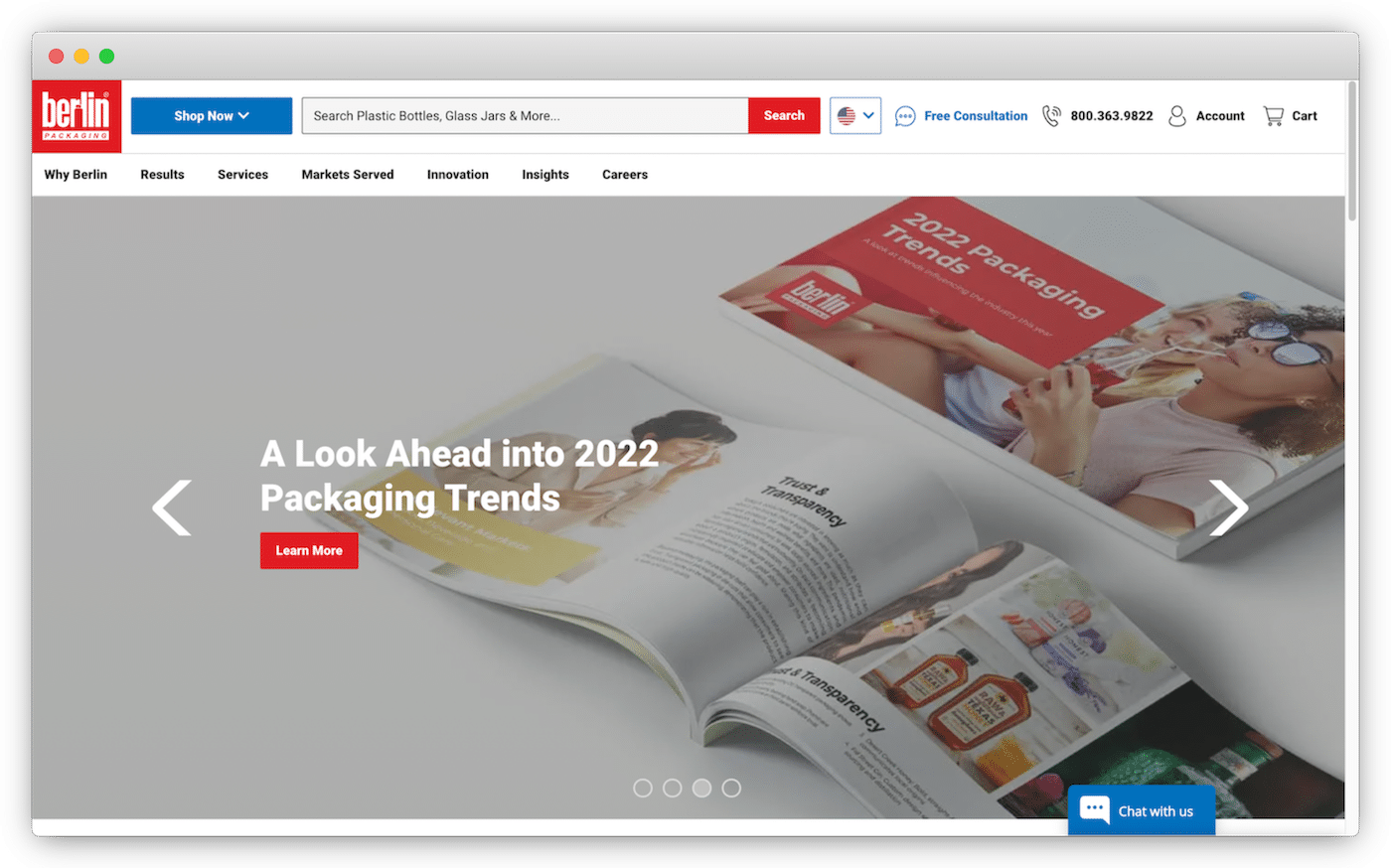
Berlin Packaging is a hybrid packaging company supplying containers, innovative design, and wholesale bottles across 100 countries worldwide. While their years in business contributed to their $2 million annual revenue, the first-class experience given to website visitors played a key role in converting prospects to customers.
The brand delivers a B2C-like shopping experience that B2B buyers crave these days, including features like live chat, customer reviews, and related products. In addition to making the site’s navigation easy for buyers to sort through the company’s product catalog, each product contains high-resolution images and specific product details. Customers can also narrow their search using various parameters, such as color, material type, or shape.
Atlanta Light Bulbs
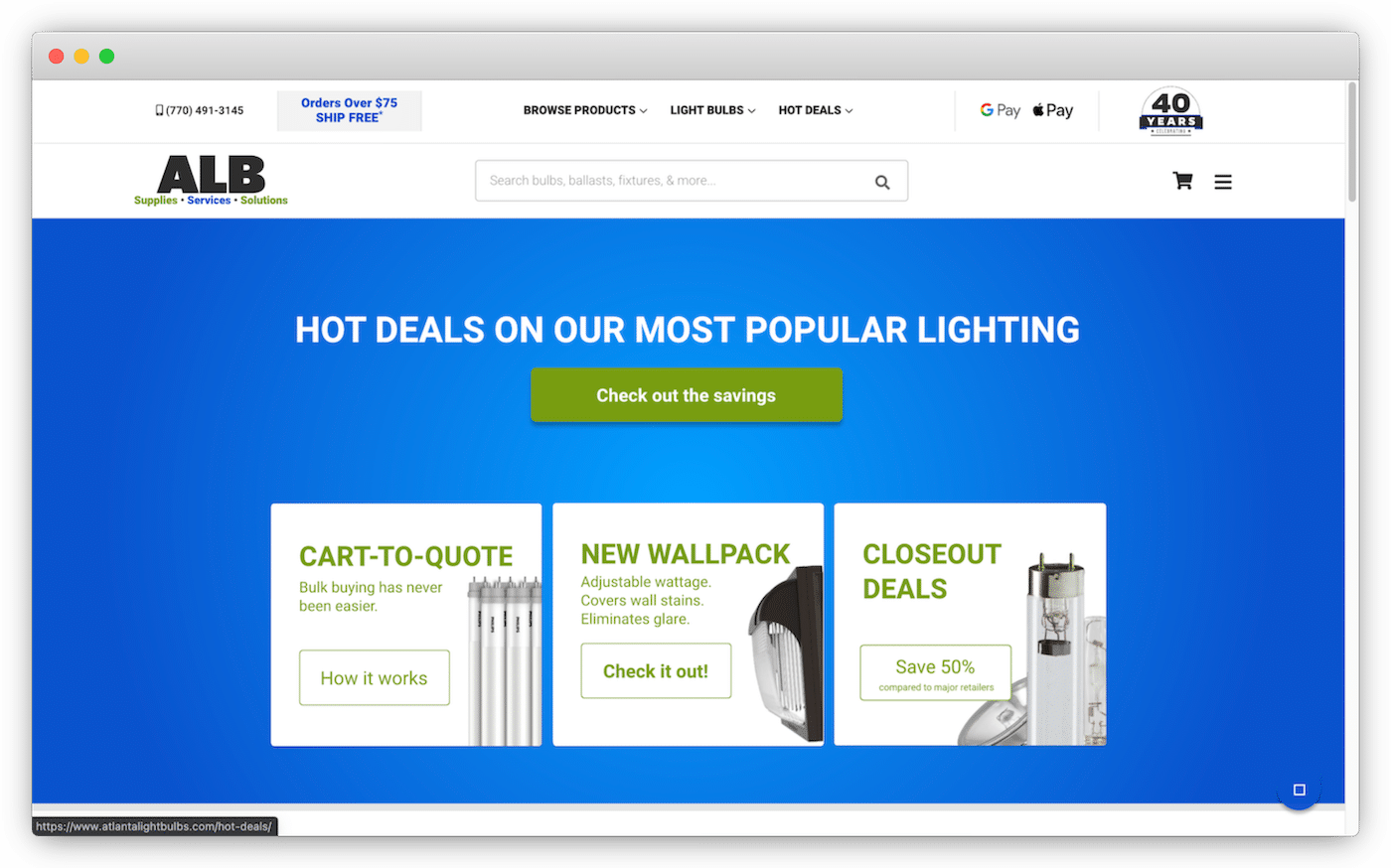
Atlanta Light Bulbs has been selling products online since 1989 but recently overhauled its e-commerce operation to increase revenues while offering customers more features and streamlining their shopping experience. Customers can filter product searches by brand, price, length, base type, wattage, and can easily read customer reviews.
[toc-embed headline=”B2C E-Commerce”]
B2C E-Commerce
B2C e-commerce is the transaction between a merchant or retailer and an end customer on an e-commerce platform. It’s the most common type of e-commerce today. Kaleido forecasts that cross-border B2C e-commerce will reach $1.2 trillion in 2022, meaning there are many unique opportunities with this type of e-commerce.
Customers purchase their items online from a standalone e-commerce store or marketplace like Amazon. This allows customers to purchase an item anywhere rather than going into a traditional brick-and-mortar store.
B2C is the consumer-facing segment of e-commerce. While B2B e-commerce focuses on building relationships with buyers, B2C merchants attract (and keep) customers using competitive pricing, vibrant product images, and discounts.
Thus, investing in a user-friendly, well-linked, and colorful website is something brands and retailers in the B2C space take seriously. Because B2C customers make smaller orders and quicker buying decisions, merchants spend a small amount on marketing and promoting their products.
While it’s easier for vendors to handle tasks in B2B transactions, B2C e-commerce usually requires a specific department in charge of pre and post-sale service to answer queries and attend to any concerns. Also, this type of e-commerce deals with selling products in small amounts, which requires customized shipping and production for each purchase.
Examples of B2C e-commerce
GNC
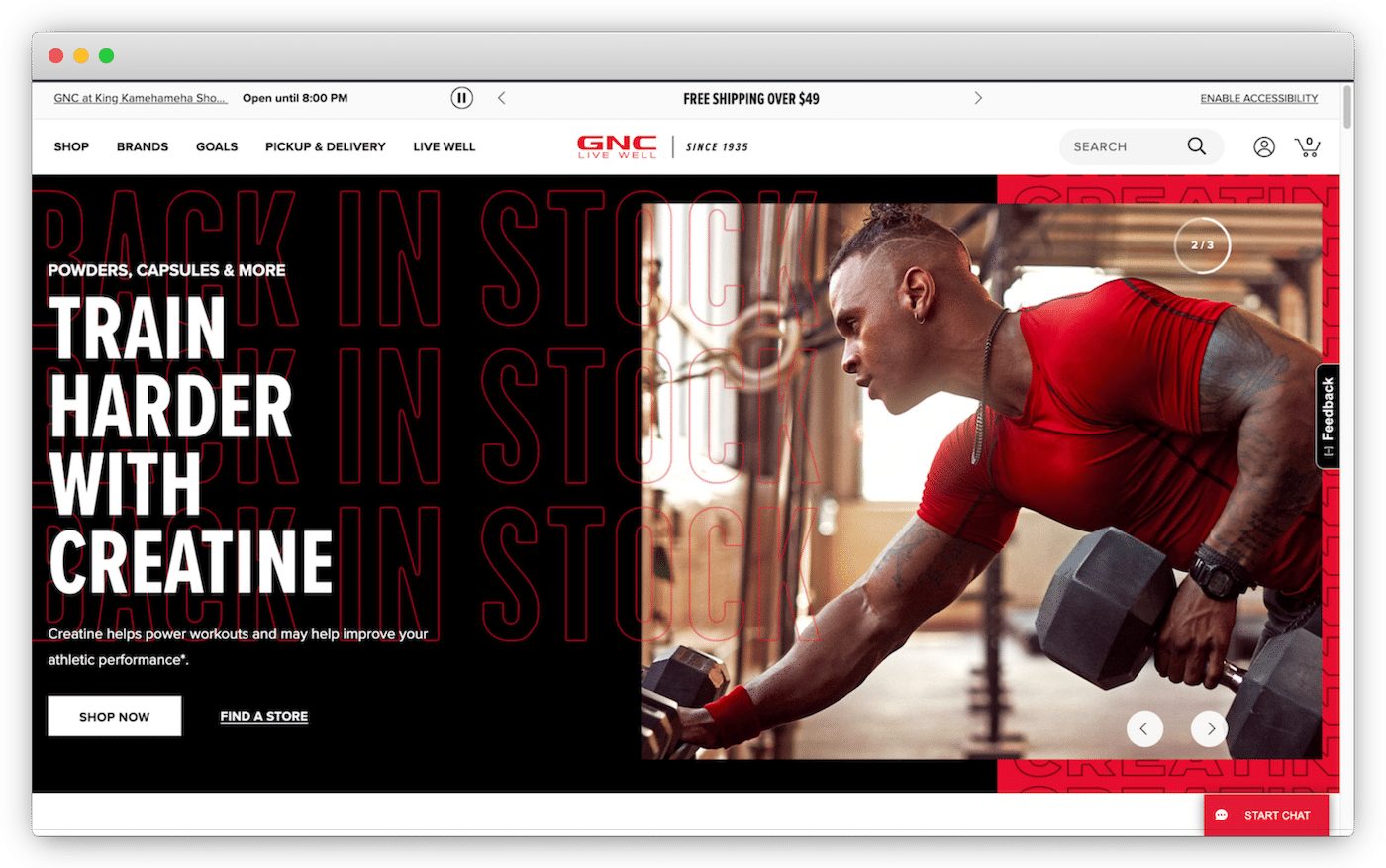
GNC is a leading global health and wellness brand known for offering cutting-edge nutrition and supplements that transform the body. Its products are sold in more than 3,000 locations in the U.S. and Canada and are moving to reach even more landmarks with a recent partnership with the sport-nutrition brand GLAXON.
GNC is an excellent example of B2C brands that benefited from the pandemic e-commerce sales. At the end of 2020, its sales reached $150 million, a massive spike from 2017’s $2.02 billion. GNC achieved this feat using e-commerce best practices such as partnering with Shipt to offer same-day delivery for their customers and getting customers to subscribe to its products.
Offering same-day delivery means customers can rely on the brand to stick with their health goals for the year and track them effectively. With the help of cloud-based software, GNC created a program that lets customers enroll and use subscriptions online and in retail stores, helping them reduce friction and further strengthen the relationship between retailers and consumers.
Spotify

Spotify is an excellent example of a music streaming service that understands user consumption habits and maximizes them. Spotify uses data and information about each listener to recommend playlists, artists, or albums that each user will like.
It even allows users to create personalized playlists and subscribe to its platform. With this simple personalization technique, Spotify has been growing its revenue to 2.5 billion euros in the first quarter of 2021.
Oreo Cookies
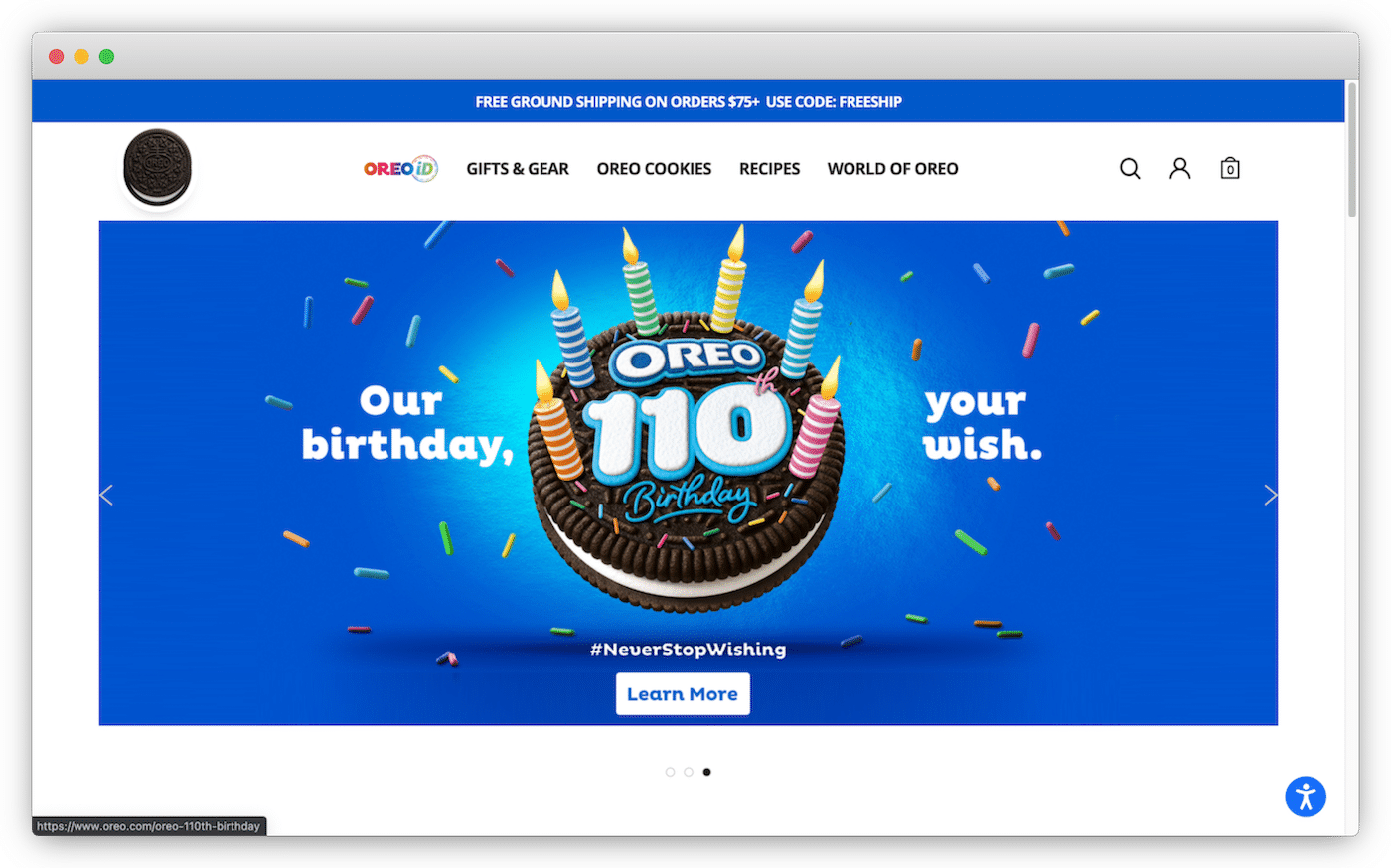
Oreo, a brand of creme-filled sandwich cookies, is a good brand that has maintained its flavor and built its brand over time. To promote its e-commerce business, Oreo created a Twitter campaign #playwithOreo which was implemented in 40 countries and 14 languages.
This campaign increased world cookie consumption by 2%. Of course, Oreo grew its Twitter followers by more than three times and increased sales in the process. Oreo diversifies the appeal, refines the brand message, and attracts new audiences without losing faithful ones.
[toc-embed headline=”D2C E-Commerce”]
D2C E-Commerce
D2C or DTC e-commerce is an e-commerce model that involves selling directly to the end customer without selling through a retailer, distributor, wholesaler, or other outlets. In this model, companies bypass the retailer and middlemen activities and foster genuine relationships with their end customers.
Both buyers and sellers can benefit from a D2C model. Buyers get personalized and tailored product offerings without much hassle. On the other hand, brands learn from customer data, create segments, and sell more products.
In the past, brands sold items to retailers or middlemen who maintained customer relationships. That means brands don’t have access to precious data about buying trends, demographics, and customer location to provide a personalized experience for buyers.
However, that’s not the case today, with more and more brands adopting the D2C model. Both new and existing brands are relying on the direct-to-customer e-commerce type to:
- Monitor and track customer behaviors across channels
- Cut expenses associated with using middlemen or distributors
- Optimize product launches
- Improve customer experience
- Communicate better with customers
By eliminating the activities of wholesalers and distributors, brands can reach customers directly and gather first-party data on traffic and conversion rates, test new products, and efficiently run A/B tests on promotions and strategies.
The massive consumer shift to digital channels and change in customer behavior is among the few reasons for D2C adoption worldwide. A study found that 55% of consumers prefer to buy directly from brands.
One of the disadvantages of DTC is that it requires a substantial financial commitment. Driving traffic to an e-commerce site can be expensive, and it can be difficult to gather enough of it across channels to make up for the customer acquisition cost. Also, implementing a D2C channel may require retooling the brand’s operation, such as using an order management system (OMS) and working with third-party logistics (3PLs) for fulfillment.
Examples of D2C e-commerce
Nike

Nike is an excellent example of a company that increased its bottom line with direct-to-customer sales. Early in the pandemic, Nike reduced its reliance on department stores to sell through its website and apps. As of August 2020, department store sales were down by 16.9%.
Before then, Nike took its store off Amazon to elevate the customer experience by reducing counterfeit products to customers and improving direct, personal relationships. Nike also promoted various training apps such as Nike Training Club and Nike Running Club to help customers stay fit and connected.
As a result, activity on Nike’s apps in China increased 80% at the end of 2020, and sales increased by 30%. In 2021, Nike’s direct-to-customer sales accounted for $16.4 billion of its total revenue, and Nike believes more than 50% of its business will come from digital sales in the coming years.
JUDY

JUDY sells emergency preparedness kits to younger generations. It uses crystal explicit product imagery and next-gen design in its storefronts to appeal to the target audience.
In terms of D2C techniques, JUDY harnesses traditional methods such as sending SMS text messages to engage with customers, offering ongoing updates, sending emergency alerts, and providing helpful resource videos. JUDY also provides tons of educational and valuable materials to engage website visitors further.
Bonobos
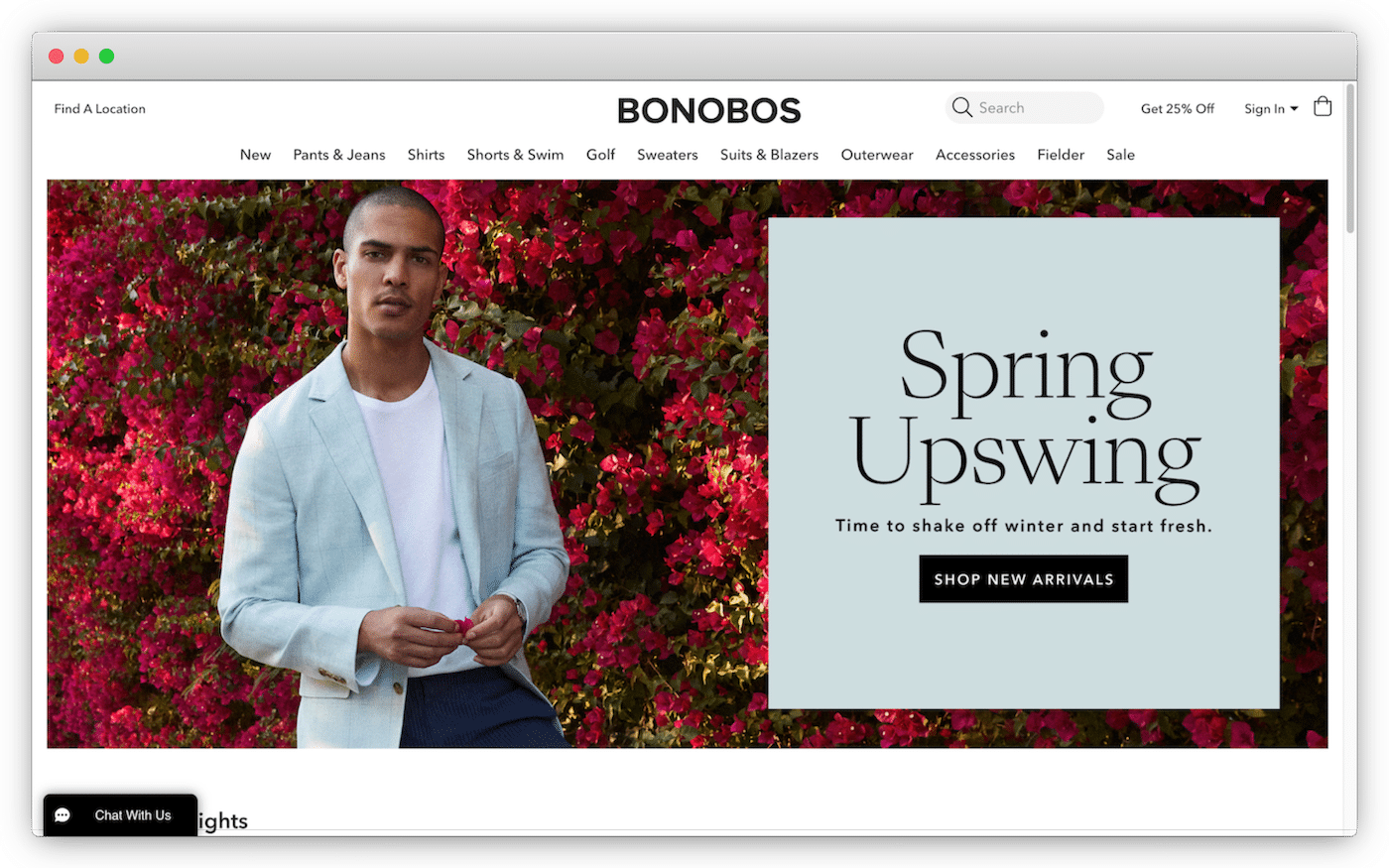
Bonobos is a $300MM D2C brand and renowned dealer in men’s clothing. Bonobos is an early adopter in DTC, launching its platform as far as 2007 when no brand was selling good quality pants to men online. It made more than $100,000 in sales and received $124 in funding from investors in its first year.
Bonobos’ value proposition and other unique product offerings stood out among the competition. Furthermore, Bonobos offers its customers free shipping and returns if they ever bought anything that didn’t fit while encouraging them to buy multiple styles and sizes to find the best fit.
[toc-embed headline=”Marketplace E-Commerce”]
Marketplace E-Commerce
In the marketplace e-commerce model, both buyers and sellers transact on a proprietary and centralized platform. After every completed transaction, the marketplace takes a commission from both vendors and consumers, but it doesn’t don’t hold inventory; it partners with manufacturers and brands to dropship on their behalf.
Although this model has been around for years, it saw a massive spike in 2021, with household names like Michaels announcing plans to hop on the bandwagon. Existing marketplaces like Walmart’s marketplace also saw ample growth, increasing the number of sellers on its platform by double in mid-2020. Further, experts predict that B2C marketplaces worldwide could reach an estimated $3.5 trillion by 2024.
In marketplace e-commerce, the marketplace assigns clickable access to vendors to receive orders from consumers by displaying their products, including their features and prices. As an intermediary, the marketplace handles all the “transaction essentials” for the vendor, including online payment, import and export, logistics, insurance, promotion, and consumer protection. Also, the marketplace provides consumers with the breadth and depth of product options from different vendors and different qualities and prices.
However, despite its versatility and ease of access, the marketplace model is difficult to initiate. The marketplace is built on the premise of buyers and sellers transacting with each other, but brands and retailers diving into this type of e-commerce for the first time have none of these. Attracting and convincing sellers to join a new platform is an aspect that any brand planning to launch a marketplace e-commerce must consider.
Examples of marketplace e-commerce
Farfetch
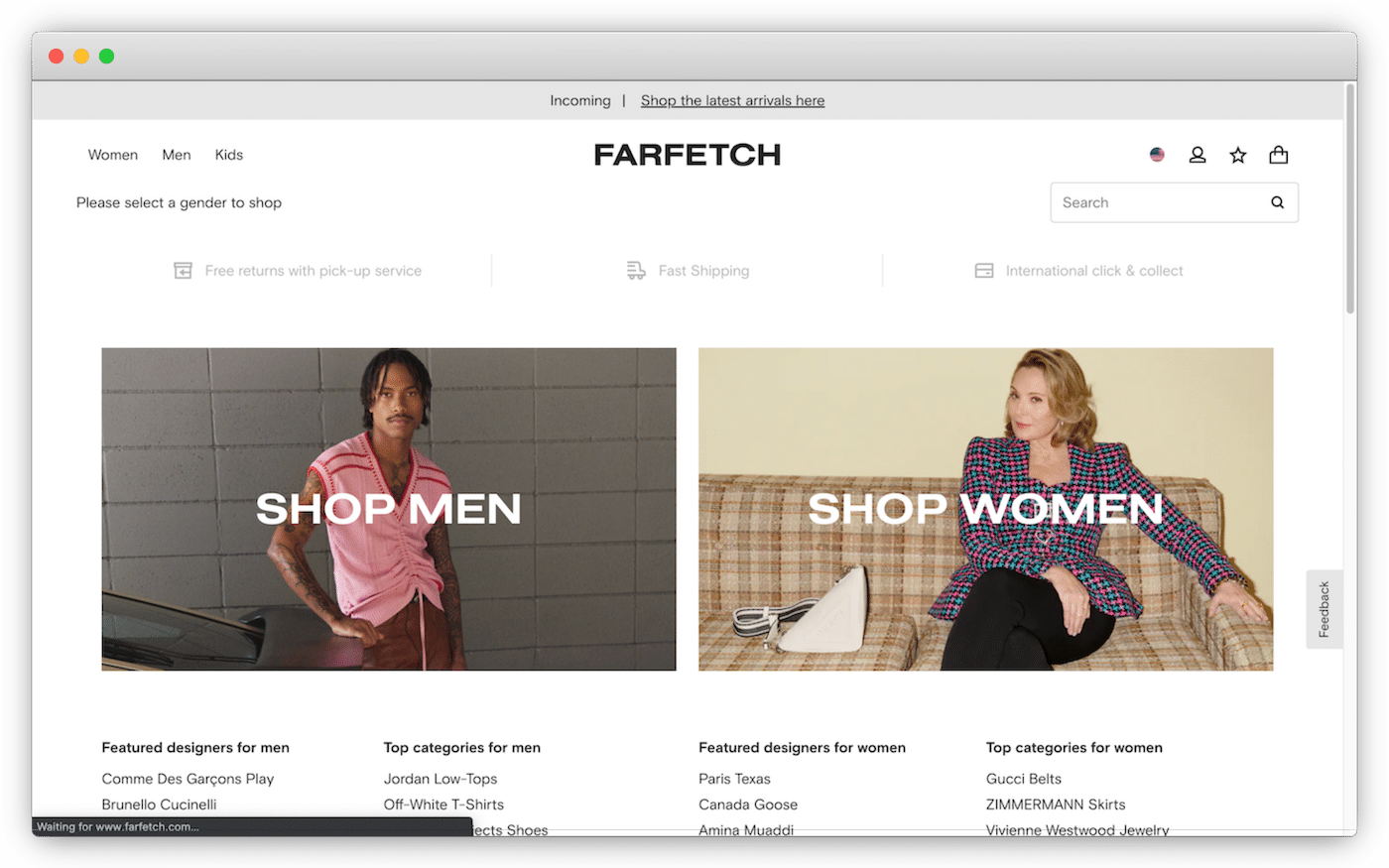
Farfetch luxury brand was an early adopter in the marketplace model, launching its online marketplace as far as 2008. When the pandemic hit, the brand was fully prepared to accumulate gains. At the end of 2020, revenue went up by 68%, reaching a record-breaking $1.7 billion in sales. Its customer base also grew to almost a million new customers.
Today, the Farfetch marketplace connects customers in more than 190 countries with items from over 50 countries. In its early days, Farfetch grew by giving smaller brands and startups with no online presence the ability to sell their products on its website.
As it rose through the ranks, big brands like Burberry, Balmain, and Gucci now sell on Farfetch. Like every other marketplace, Farfetch generates revenue by taking a commission (between 25% to 33%) on sales from brands that sell on its platform.
Walmart
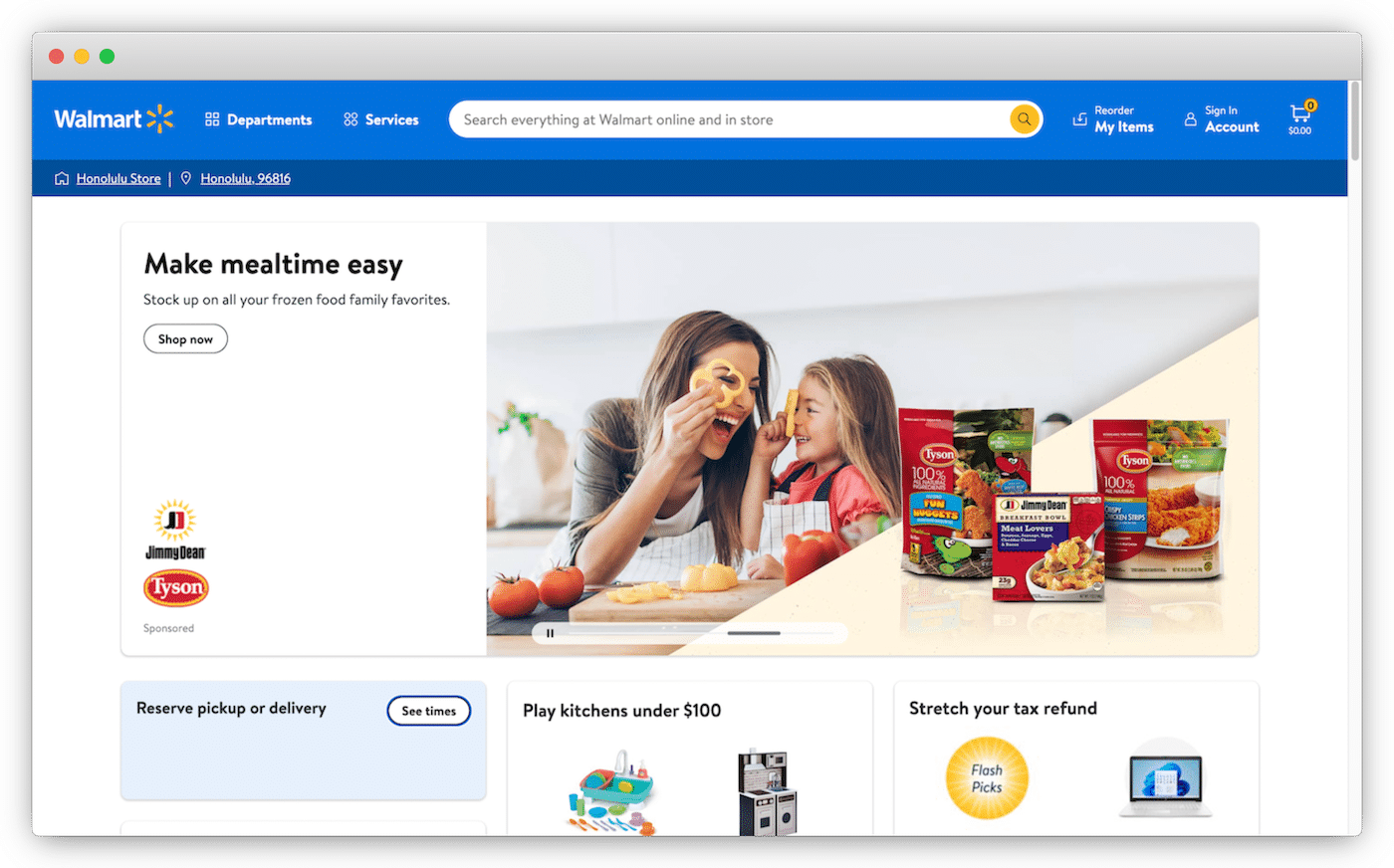
Walmart is an e-commerce marketplace with over 100,000 professional retailers and more than 120 million monthly visitors. Offering best-in-class products and customer service, Walmart is cautious about what it sells on its marketplace. This reduces the selling of counterfeit products and increases customer experience. Sellers go through an in-depth application process before they are authorized to sell on the platform.
eBay
eBay is among the top marketplaces for sellers with nearly every category of products. With 1.6 billion active listings, eBay is the second largest marketplace next to Amazon.
eBay started as a platform for connecting buyers with sellers of used items in auction-style listings, but it’s now leaning towards fixed-price listings. To help new sellers on its platform, eBay provides a “Quick Start” guide containing selling tips and techniques.

Content marketer @ fabric. Previously marketing @ KHON-TV and Paramount Pictures.
